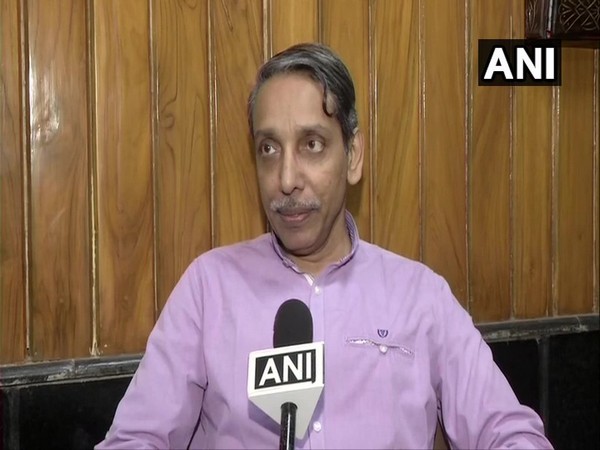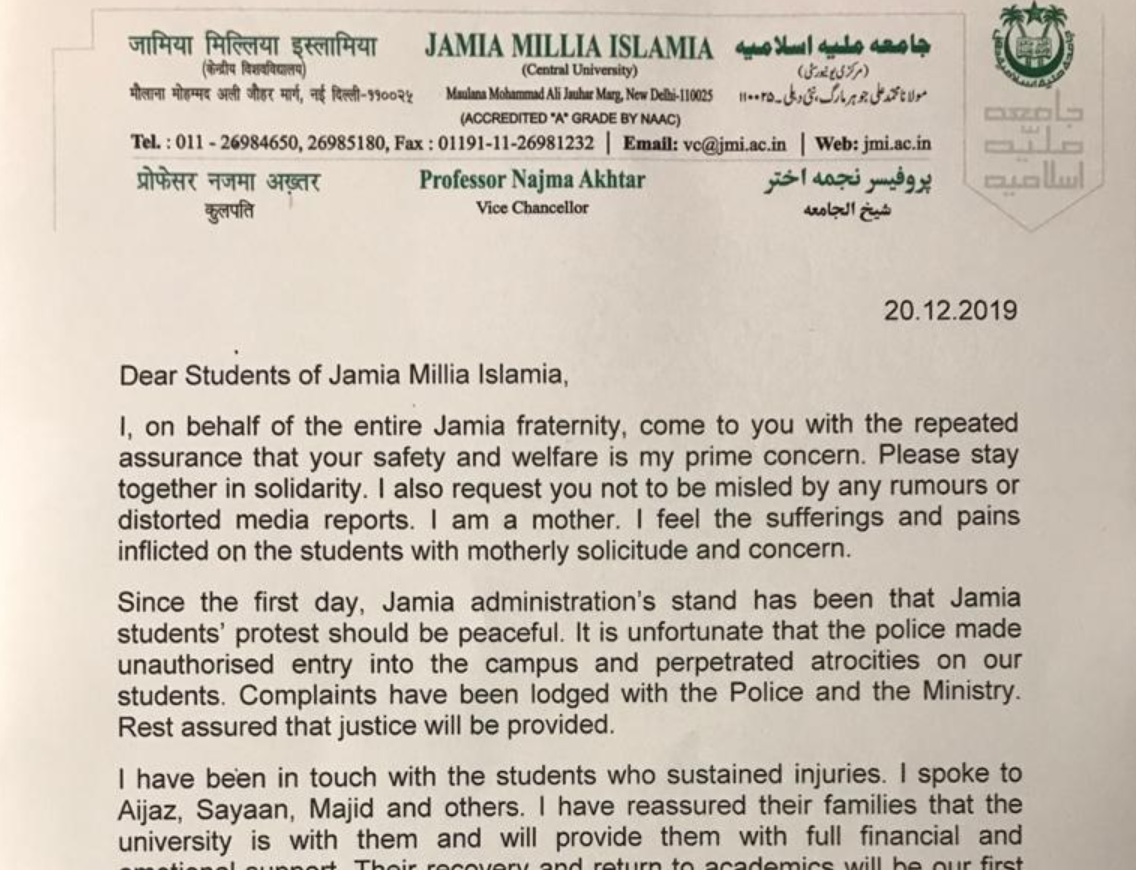What JNU needs to learn from AMU, and Jamia Millia Islamia
In the year 2019, three universities of the country witnessed violent protests. However, two of them retained trust and confidence of their students but JNU.

- Country:
- India
The outgoing year 2019 will always be remembered in Jawaharlal Nehru University (JNU) for disillusionment of students from administration. In the ongoing protest in the campus which started on 28 October, the lack of trust between the administration and students’ union (JNUSU) seem to be more worrying than the immediate cause of protest.
Though students of the three Central universities – JNU, Aligarh Muslim University (AMU) and Jamia Millia Islamia (JMI) University– suffered almost the same level of police action. The JNU students were baton charged on roads but their counterparts in JMI and AMU had to face it inside the campus. The students of JMI and AMU had to vacate the hostels as well as the campus.
Here is a difference – the students of JMI and AMU did not blame the administration but the JNU students did it always. Besides, the Vice Chancellor (VC) of JNU Prof. Jagadesh Kumar has alleged that he was abused and his car was vandalized by a group of students. In pursuance to this incident the university administration suspended six students and debarred them from the campus. Contrary to that there is no any such complain of misbehavior of students with VC or any faculty in JMI or AMU. Why this difference in students’ behavior in these three universities?
JNU’s circulars versus AMU’s letter
There may be more than one reason. But, what meets the naked eye is - huge difference in the approach of communication adopted by the respective administrations to reach out to their students.
However, AMU VC Prof. Tariq Mansoor himself had called the police in the campus to contain violent protestors, he was not flayed by the students for the tragedy in the campus. The JMI and AMU both the universities announced advancement of the winter vacations close of universities till January 5, 2020 but the administration was hardly blamed while JNU students blamed the administration for every miss-happening from inside to the outside of the campus.
It was probably due to the difference in the outreach activities of these three universities. In the entire duration of the student agitation, the JNU administration issued circulars after circulars and notices after notices which were called as ‘threats’ by the JNUSU. However, in addition to denouncing the violence and taking administrative decisions, both JMI and AMU succeeded to show that the administration was standing with students at the time of crisis. While the violent scuffle was going on outside the campus, the JMI VC Prof. Najma Akhtar through media asked the students to come inside the campus as the administration would not be able to protect them outside the campus. As the situation continues worsening she declared leave which was later followed by AMU.
Prof. Mansoor on 17 December and Prof. Akhtar on 20 December issued very humane and emotional letters to students and their parents. In their letters, they assured the students of their security and safety in their respective campuses besides cautioning them on misleading media reports and propaganda.
Prof. Akhtar being a woman utilized her position for emotional connect with the students to win over their confidence and trust. “I am a mother. I feel the sufferings and pains inflicted on the students with motherly solicitude and concerns,” said Akhtar in her letter to students.

Demonstrating almost the same amount of empathy, Prof. Mansoor, tried to reach out students of his university. After describing the circumstances which led violence by outsiders followed by police action he said, “I am extremely pained to the injuries caused to the students…I further assure you that no innocent student is harassed or wrongfully acted against. At the same time, we will ensure that no anti-social element will be allowed to disturb the campus peace and jeopardize the career of students,”.
Such communications were not seen from JNU administration when protesting students were baton charged in New Delhi area which left several of them injured. The police also detained about 100 students and two FIRs were also filed but the university administration remained a mute spectator. In this entire period of student agitation, the JNU administration seemed rushing between Delhi High Court, MHRD and Delhi Police.
MHRD’s mediation turned futile
In the ‘Record of Discussions’ released by the Ministry of Human Resource Development (MHRD) on 12 December, the university was authorized to roll back contentious ‘service and utility charges’ with an emphasis that all the stakeholders in the JNU shall adopt flexible approach. In this meeting the university administration and JNUSU were reportedly agreed on a 50 percent concession to BPL category students in hostel fee which is Rs 600 per month for single rooms and Rs 300 per month for double rooms. “Not only shall the campus return to normalcy immediately, but a foolproof system shall be put in place for non-recurrence of such issues in future,” reads the record of discussions. However, the situation went on deteriorating.
Visit Live Discourse on JNU Protest and Discourse on Subsidized Education for more updates and share your views/opinons.
(Disclaimer: The opinions expressed are the personal views of the author. The facts and opinions appearing in the article do not reflect the views of Devdiscourse and Devdiscourse does not claim any responsibility for the same.)
- FIRST PUBLISHED IN:
- Devdiscourse










